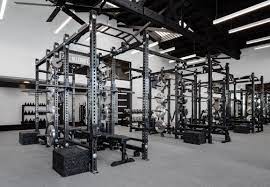This one is pretty straightforward, are you going to olympic lift or not olympic lift?
The bottom line is if you are expecting your plates to crash into the ground, you are going to need weight lifting plates, or rubberized plates to absorb forces when dropped. On the other end of the spectrum, you can get away with metal plates as long as you are not going to be dropping them, at least not intentionally.
The larger issue is quality and durability. I can say first hand I have experienced bad weight lifting plates and bad traditional plates. How do you know they are bad? One, they are not calibrated weight wise. A 20kg plate that weighs 18kg or 22 kg feels a world of difference than 20kg. The other being whether they are resilient at all.
This is where the buck stops: the longevity and the ability to take a beating. High usage, high droppage, occasional mishandling, dropping on non rubberized surfaces are all things you need to prepare for when you purchase plates. Bottom line, more expensive plates are going to be more resilient. They are usually associated with an extended warranty from the belief they will last.
But this goes into what is the context you want something to last or be resilient. Are you at a high school and trying to get some weights in? Are you using them in a commercial gym setting with a bunch of unsupervised people using them? Are you using them on plate loaded machines? Are you using them with world class athletes?
The cost may be offset by the need of just general weight. If I have 10 Racks, Buying a Rack(s) Blog, and I have a limited budget, going cheap may be my only option. If I have a bunch of plate loaded machines and several racks, again going cheap or at least a hybrid of expensive and cheap may be the best option. If you are working with elite level athletes and have few racks and small need for plates elsewhere, then maybe go expensive.
What I do know is that if you are planning on staying somewhere a long time, you will want plates to last a long time. You will have limited opportunities to buy something new when you are at a job. You better make it count. If you are getting plates that are $2/lb you may only be able to get a certain number of years out of them. When you present the need to buy new plates, you will not be associated with the saved costs early but your poor appraisal of what you need for how long you will need it. Translation, spend more money, $4-5/lb, up front to get better quality.

The last piece of this puzzle is the color of the plates. For those that did not know why so many plates are colored: Red (25kg), Blue (20kg), Yellow (15kg), and Green (10kg) that is the color of the Olympic Rings. There is an association between weightlifting as an olympic sport and the color of the plates. Plus there is an association between what is on the bar when the colors are visible (Rainbow is 160k or 352lb). It is readily identifiable that something is accurately reflected as real when the colors are represented on the plates. Plus there is a certain aesthetic when there is a contrast between the plates and the rack.

You also cannot go wrong with a solid color like black or silver. It’s pretty impressive to see a super clean black rack with shiny silver plates or a clear grind rack with matte black plates. Presentation of your room has a wow factor when you see certain colors on the racks that match and pair well.


In the end, it comes down to what do you need, how it will be used, what kind of usage will the plates get, how long do you need the plates, and what aesthetic you think makes most sense for your room. Think it out, have a rationale as to why you choose one company over another. Make a decision for the best interest of your weight room and the program you hope to have.

